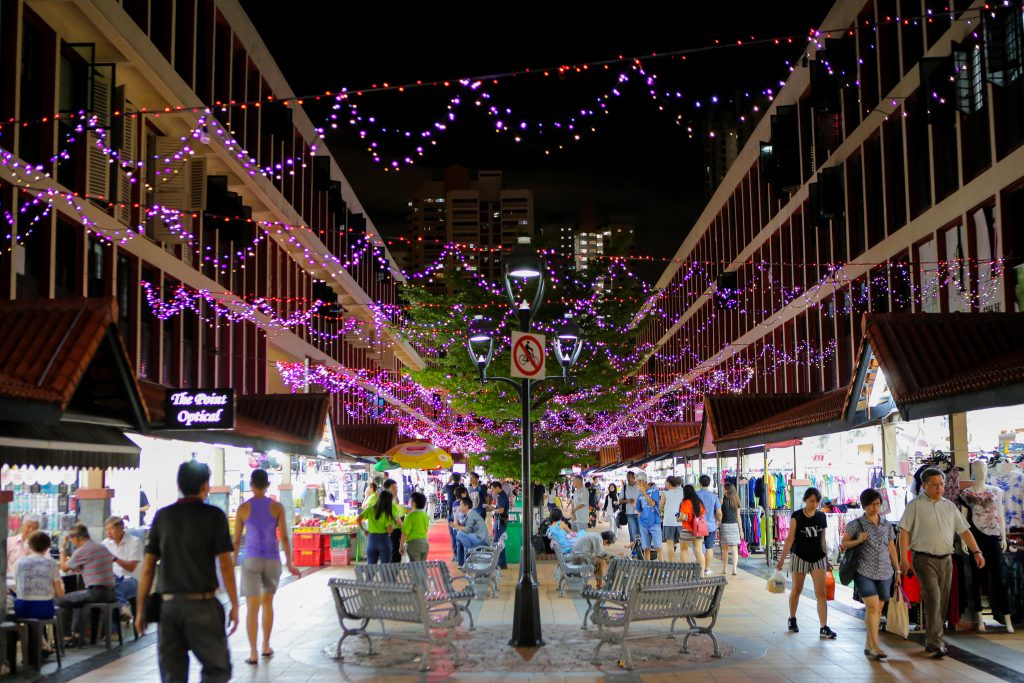Rethinking spatial planning for urban conviviality and social diversity: a study of nightlife in a Singapore public housing estate neighbourhood
June 20, 2017

What makes Toa Payoh Central a hip place to hang out at night?
Toa Payoh Township, one of Singapore’s earliest state-planned housing estates, welcomed its first residents on 20 June, 1966. Within this satellite town sits its town centre – Toa Payoh Central, an unlikely hub of activity in this seemingly quiet neighbourhood.
The atmosphere Toa Payoh Central exudes as the place to ‘hang out’ is certainly evident from the near-constant flow of youths and families basking in the centre’s street-life on weekend nights. Dr Yeo Su-Jan (PhD candidate, NUS Faculty of Architecture), A/P Ho Kong Chong (Dept of Sociology), and Prof Heng Chye Kiang (Faculty of Architecture) investigate the psychological effects of the centre’s heartland spaces that contribute to this convivial nightlife atmosphere. They observe that the urban fabric of Toa Payoh weaves together a mix of residential, commercial, and leisure amenities that attract a range of visitors to the estate. In the town centre, building entrances and windows facing the street and ground-level retail stores offer an inviting aura for passers-by to enter. Architectural elements such as arcades, awnings, and seating provide areas of respite that encourage longer stays. While its open plaza often hosts roadshows, night bazaars, and funeral wakes, it is also used for more casual activities such as line-dancing and sidewalk astronomy.
Yeo, Ho, and Heng’s study thus calls for the rethinking of spatial planning at the grassroots level that not only welcomes the public to participate in family-friendly night activities, but also fosters a more accepting environment in our homeland’s increasingly diverse community.
Read more here.
